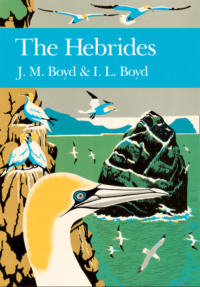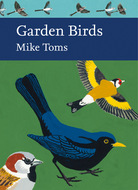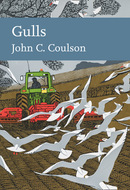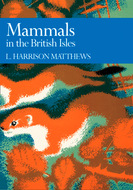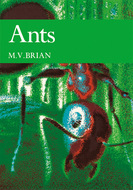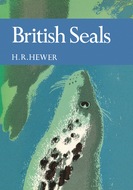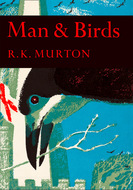Kitap dosya olarak indirilemez ancak uygulamamız üzerinden veya online olarak web sitemizden okunabilir.
Kitabı oku: «The Hebrides», sayfa 2

Looking like a living tissue, the Jurassic sandstone at Elgol, Skye has been eroded by the sea into this delicate, pale yellow, lacunary web (Photo J. M. Boyd)
The coral islands of tropical seas display a biological process in which living corals extract lime from the sea water and build enormous reefs which, following changes in sea level, become raised islands or coastal platforms. In the Hebrides, there is at work a similar grand relationship between sea, land, and air, in which marine invertebrates and algae provide a vital link in the accretion of shell sand. Since the end of the last ice age, about 10,000 years ago, vast quantities of lime have been extracted from the sea-water by countless generations of shell-forming animals, whose remains have been ground in the surf and cast up by sea and wind upon the rocky shores. Spacious coastal platforms of dunes and machair (Hebridean maritime grassland) have been formed in the southern Outer Hebrides, Tiree and Coll, enriching both the natural and human ecology of these islands (See here). The whole process is supported by untold numbers of animals and plants of many different kinds. A thimbleful of shell sand, spread and magnified, will reveal the fragmented shells of a host of humble creatures, each of which makes its tiny but vital contribution to the grand scheme.
Islands for Science
The Hebrides, therefore, have a potential for research in fundamental, natural processes, and none have been used more than Rum and St Kilda for this purpose. In the 1950s, both of these islands were recognised as outstanding for their unique flora and fauna. They have concise temperate/maritime ecosystems and classical geology, and are laboratories for long-term ecological research. Accordingly, they were made National Nature Reserves in 1957 and have been centres for research ever since.
Studies of the fundamental biology of large herbivores—the red deer on Rum and the Soay sheep on St Kilda—have been central research endeavours, which have provided an understanding not only of the animals themselves, but of the ecology of their whole island. The research on the red deer on Rum has been done in controlled conditions, which would be hard to obtain among wild deer on mainland deer forests. This has revealed the precise structure and dynamics of the deer population, and the behaviour of stags and hinds, through entire life-spans. At St Kilda, the mechanism of natural control of numbers of a free-ranging (unmanaged) population of Soay sheep has been studied over thirty years. These sheep have survived in their island home for probably over 1,000 years, and the mechanism of control of numbers seems to protect them and their habitat from degradation through overpopulation and inbreeding.
Twenty-two species of seabird breed in the Hebrides. St Kilda alone has fifteen species and possibly holds over a million seabirds in summer. The oceanic seabirds—petrels, auks, gannets and kittiwakes—have the mystical beauty of all truly wild creatures. They live most of their lives far upon the face of the wide ocean, and in summer they gather in their thousands for a great carnival of nesting. The beauty and excitement of the birds wheeling and darting in the splendour of sunlit cliff and chasm brings awe and rapture to the dullest of hearts. For those who brave the benighted tops of Rum or the cliff terraces of the outliers there is a contrast equally as moving—the weird, dark world of the night-flying petrels.

The study of the seabirds poses physical as well as intellectual problems. Simple routines of counting the birds and interpreting the census data are difficult to achieve with any degree of consistency between counts. Nonetheless, in the past thirty years, marine ornithologists throughout the world have greatly improved census methods of many species which present different technical problems. For example, gannets and fulmars nesting in the open require different techniques from burrowing puffins, and both are different from night-flying petrels. To detect changes in the size of the populations, a sustained census effort is required over decades, and this needs forward planning and the handing on of the techniques to successive workers.

Figs. 2 a & b Location maps of the Outer and Inner Hebrides

The south-east face of Sula Sgeir showing the northern limits of the gannetry in 1962 (Photo J. M. Boyd)
The seabirds of the Hebrides are a major part of Britain’s heritage of wildlife, requiring study for its own sake. However, the status of the seabird populations can also be an indicator of the health of their environment. Through the food chain which starts with the microscopic life in the sea and passes through invertebrates and fish, the seabirds can become the repository of pollutants such as polychlorinated biphenols (PCB’s) and heavy metals. Such pollutants are likely to affect the breeding performance of the seabirds and the golden eagles and sea eagles which feed upon them in the Hebrides. In the case of a Chernobyl-like nuclear fall-out in the north-east Atlantic, St Kilda might prove an invaluable nuclear sensor. The great puffineries are rich in marine organic debris gathered from a wide area of ocean. They are grazed heavily by sheep which could become contaminated. The concentration of radio-active material in the individual seabird might be very small, but that in the bone marrow of the lambs may be much greater. Is it too imaginative to see the seabird-sheep islands as future sensors of the marine environment?
PART I
CHAPTER 1
Geology
What happens to us
Is irrelevant to the world’s geology
But what happens to the world’s geology
Is not irrelevant to us.
We must reconcile ourselves to the stones,
Not the stones to us.
Hugh MacDiarmid
Natural history starts with the elements of fire, earth, air and water all of which long pre-date life on the face of the Earth. No clear understanding of the origins and nature of life can be obtained without knowledge of the rocks, weather and conditions of the seas and freshwaters. It is on the interface between these elements that all life has sprung and been maintained throughout aeons of time, and nowhere is this truth more explicit than in an archipelago. There, among the islands, the grand relationship between land, sea and sky is obvious and makes a deep appeal to the human mind. Islands are a source of inspiration and happiness; their beauty is enshrined in a multitude of native island cultures all over the world and appreciated by historian, artist and scientist alike. The Hebrides are no exception. In them it is possible to trace the connections between these base elements and the lives of the wild creatures and human beings that spring from them, and to see the islands as one large system with its own in-built stops and balances in terrain, weather and ocean. Let us start with the rocks.
The span of geological time represented in the rocks of the Hebrides is almost as great as anywhere in the world. Though we know that planet Earth is some 4,600 million years of age, in human terms, the Lewisian gneiss formed some 3,000 million years ago is as old as time itself, while on the beds of the sea and the deep lochs the rocks of the future are being formed from the erosion products of by-gone glaciers, rivers and the sea. The cycle of regeneration and decay of hard rock seems timeless when compared with the timespan of human life.

In this vast interval of time, that part of the crust upon which the Hebrides now stand underwent a gradual transposition from tropical to temperate latitudes. Some ages of peace and tranquility are marked by the depositions of the sedimentary rocks: the Torridonian sandstone eroded from a range of mountains and deposited in predominantly desert conditions, 1,000 to 800 million years ago; the sandstones, shales and limestones of Cambro-Ordovician/Dalradian age, 600 to 450 million years ago; and the limestones and mudstones of the Jurassic, deposited in shallow lacustrine or estuarine conditions c. 150 million years ago (called not after the island of Jura, but the Jura Mountains in France).

Fig. 3 a & b Geological maps of the Outer and Inner Hebrides (Smith and Fettes, 1979, Craig (ed) 1983)
Between these periods of quiescence there were periods of profound crustal movement as blocks of continental crust fractured, jostled and were transported on plates of underlying crust, though the first of these hardly touches the Hebrides. During the Grenville mountain building about 1,000 million years ago, rocks which were probably the equivalent of the Torridonian strata far to the east of the present outcrops were compressed, deeply buried and heated in the crust, baked and altered to form the schists and metasandstones of the Moine Supergroup. These metamorphic rocks together with unaltered Torridian in turn formed a land surface on which were deposited limestones, shales and sandstones of Cambrian and early Ordovician age.
The second great upheaval was the Caledonian mountain building, 650 to 400 million years ago, when the rocks of the mainland were again folded and altered to form the rocks of mountains now occupying Scandinavia, Scotland and eastern USA. Moine rocks were heated and altered again, while Cambrian strata became the schists of the Dalradian Supergroup. Into the folded and refolded rocks, huge masses of molten crust were emplaced as granite, now widespread in the Highlands and represented in the Hebrides in the Ross of Mull. Along the western seaboard, however, rocks of the metamorphic mountains were thrust upwards and outwards in a dislocation of up to 80km. This is known as the Moine Thrust which runs on the land surface from Loch Eribol to the Point of Sleat in Skye. To the west of the Thrust, the Lewisian, Torridonian and Cambro-Ordovician rocks are in unmoved (and unaltered) sequence; to the east of the Thrust, within the Caledonian mountain belt, lie the Moines of Sleat and western Mull and the Dalradian of eastern Mull, Jura and Islay.

Fig. 4 The main geological faults of the Hebrides and West Highlands (Craig (ed) 1983)
The mountains formed from this orogeny were subsequently eroded to form the Old Red Sandstone (ORS) c. 350 million years ago, a vast continental fluviatile and lacustrine deposit. Orkney is composed almost entirely of ORS but only small outcrops occur in the Hebrides—sediments in Kerrera and Seil, and lavas at Loch Don in Mull.
The third upheaval was the rift of the European and Greenland continental plates which created the British Isles, the continental shelf and the Hebrides, but not as we know them today. This rifting, which began 70 million years ago and still continues today, was accompanied by much volcanic activity, the thrusting up of masses of gabbro and granite, the outblasting of vast quantities of dust, ash and cinder and the outpouring of basalt lavas. These are the Tertiary volcanic complexes of Arran, Mull, Ardnamurchan, Rum Cuillin, Skye Cuillin and St Kilda, with associated plateau lavas in North Skye, Canna, Eigg, Muck, West Mull and Morven. They are related to other such centres in Ireland (Giant’s Causeway), Faeroe Islands and Iceland, where the volcanic activity still continues. The islands as we know them today have been evolved through a northward drift of the crustal plate(s) of the planet from which the British Isles were formed, from a latitude of 30°S to the present latitude of 55°N. Throughout the drift, the palaeogeography was also continuously transformed by mountain building of the type described above, erosion, sedimentation, and volcanic activity. The genesis of the British Isles throughout geological time has been described simply by J.P.B. Lovell (1977).
Geological Framework
The solid geology is shown in Fig. 3 and Table 1.1. The Hebrides lie at the south-eastern margin of a crustal plate which included much of the material which forms Greenland and eastern Canada (Fig. 5). This plate broke and the parts drifted away from each other, ‘floating’ for tens of millions of years on the plastic sub-crust. The great trough between the parts now holds the Atlantic Ocean. This common basement between the Old and New Worlds contains some of the oldest rocks known to science, c. 3,000 million years old, from which younger rocks such as the Torridonian sandstone have been derived, and upon which the sandstones and other younger rocks are placed. In the Outer Hebrides, Tiree, Coll, Iona and Sleat in Skye the gneiss forms the present-day land surface—all the younger rocks have been removed by epochs of erosion. Elsewhere, the basement is covered by an array of younger rocks, or has been penetrated or pushed aside by great intrusions of magma and covered by extrusions of lava.
| Era | Period | Age (m.y.) | Rocks | Islands |
| Pre-Cambian | +3000–600 | |||
| Lewisian | +2800–1200 | acid & basic gneisses, granites, limestones | N. Rona, Lewis, Harris, Uists, Barra, Coli, Tiree, Skye, Raasay, S. Rona, lona, Islay | |
| Torridonian | 1000–800 | sandstones | Handa, Summer Isles, Raasay, Scalpay, Skye, Soay, Rum, lona, Colonsay, lslay | |
| Rocks east of the Moine Thrust affected by the Grenville Orogeny, c. 1000m.y. | ||||
| Moine | 1000–700 | schists, | Skye, Mull | |
| Supergroup | granulites | |||
| Palaeozoic | 600–230 | |||
| Cambro-Ordovician | 600–500 | piperock, serp. Skye grit, Durness limestone | ||
| Rocks east of the Moine Thrust affected by the Caledonian Orogeny, 500–400m.y. | ||||
| Dalradian Supergroup | +600–500 | quartzites schists | Lismore, Kerrera, Seil, Garvellachs | |
| limestones, slates | Luing Scarba, Jura, Islay, Gigha | |||
| Silurian | 440–400 | none | none | |
| Devonian | 400–350 | conglomerate | Kerrera, Seil | |
| Carboniferous | 350–270 | lava, sediments | Jura | |
| Permian | 270–225 | sandstones, conglomerate | Lewis, Raasay, Mull | |
| Mesozoic | 230–65 | |||
| Triassic | 225–180 | sandstones, conglomerate | Lewis, Raasay, Skye, Rum, Mull | |
| Jurassic | 180–135 | sandstones, limestones | Shiants, Skye, Raasay, Eigg | |
| Cretaceous | 135–70 | sandstone | Skye, Mull, Eigg, Raasay, Scalpay, Soay | |
| Cainozoic | 70–0 | |||
| Tertiary | 70–1 | |||
| Eocene | 70–40 | basalts, granites, syenites, gabbros, dolerites, rhyolites | Shiants, Skye, Raasay, Rum, Eigg, Canna, Muck, Mull, Treshnish Is., Staffa, St Kilda, Oighsgeir | |
| Oligocene | 40–45 | erosion pdts | widespread | |
| Miocene | 25–11 | erosion pdts | widespread | |
| Pliocene | 11–1 | erosion pdts | widespread | |
| Pliocene | 11–1 | erosion pdts | widespread | |
| Quaternary | 1–Present | |||
| Pliestocene | 0.6–0.013 | erosion pdts | widespread | |
| Holocene | 0.013–0 | erosion pdts | widespread | |
| shell sand | widespread | |||
Table 1.1 The distribution and age in millions of years (m.y.) of the rocks of the Hebrides.
The major faults in northern Britain run from south-west to north-east (Fig. 4). The Southern Uplands Fault and the Highland Boundary Fault do not affect the Hebridean shelf; the Great Glen Fault (GGF), the Moine Thrust (MT), the Camasunary–Skerryvore Fault (C–SF) and the Outer Hebrides Thrust (OHT) all have an important bearing on the Hebrides. The GGF runs from Shetland to north Ireland, passes between Lismore and Kingairloch, through south-east Mull and just to the north of Colonsay; to the east there are the Caledonian granites with the Dalradian schists, slates and quartzites; to the west there is the Moine Supergroup of schists, bounded in the west by the Moine Thrust and interrupted in the south by the Tertiary complexes of Mull and Ardnamurchan. The only terrestrial sections of the GGF in the Hebrides are from Duart Bay to Loch Buie in Mull, which is an area of great interest with faulted Liassic sediments folded in Tertiary times around the Mull volcanic centre.

Tertiary basalt pavement showing hexagonal jointing on Heisgeir (Oigh-sgeir) off Canna (Photo J. M. Boyd)

Fig. 5 The tectonic provinces of the North Atlantic prior to continental drift (Smith & Fettes, 1979)
The MT runs from the west of Shetland, entering the Scottish mainland at Loch Eribol and traversing the north-west Highlands roughly parallel to the coast, through Kylerhea and the Sleat peninsula of Skye and possibly through the Sound of Iona. To the west are the northern Inner Hebrides where the gneiss basement is evident in Tiree, Coll and Iona and is interrupted in Skye, Small Isles and St Kilda by massive emplacements of Tertiary lava, granite and gabbro. The Moine and associated thrusts occur from Loch na Dal to the Point of Sleat, and as far west as Broadford and Beinn an Dubhaich. The MT may just clip Rum at Welshman’s rock. To the east there is gneiss; to the west there is Torridonian sandstone and Durness limestone. Under the Sea of the Hebrides and the Minches, there are trenches in the gneiss basement filled with much younger sedimentary rocks. These have been derived from bygone mountains and are akin to the New Red Sandstones around Broad Bay in Lewis and to sedimentary strata of the wider shelf to the west of the Hebrides and around Orkney and Shetland, which may hold oil and gas. The C-SF, running from the Loch Scavaig in Skye through the Rum and Tiree Passages to the Skerryvore, is the western limit of a Mesozoic basin extending southward from Strathaird under Eigg and Muck to Mull.
Lastly, the OHT runs from the North Minch to beyond Barra Head along the east coast of the Outer Hebrides. It defines the main mountain chain of Barra and the Uists but northwards, in Lewis, it splits into a number of discontinuous planes before finally reaching the sea just north of Tolsta Head. To the east there are the sedimentary rocks in the submarine trench, while to the west is the Lewisian platform, interrupted in Harris and West Lewis by massive blocks of granite of Lewisian age.
Pre-Cambrian and Palaeozoic Rocks
These are mainly the Lewisian gneisses and granites, most of which were in existence 3,000 million years ago. In this vast span of time they have been changed. The granites, found mainly in Harris and west Lewis, are locally sheared and reduced to mylonite. South Harris is banded south-east to north-west with all the major rocks of the Lewisian series: gneiss, granite, gneiss veined with granite (all of acid character), metamorphic intermediate and basic igneous rocks, metasediments and anorthosite at Rodel. Metasediments are formed by the recrystalisation of sedimentary rocks, and occur at the north tip of Lewis, the south tip of Harris, and in the Uists and Benbecula. Substantial bands of mylonite (a slaty rock formed from crushed material along the OHT) occur in south-west Lewis and on the east coast of South Uist.
There were two distinct periods of metamorphic change, named after the districts of Sutherland where the original studies were done. The Scourian, 3,000 to 2,500 million years old, was followed by the Laxfordian, 2,500 to 1,400 million years old, and were separated by a period of crustal tension forming fissures into which a swarm of dykes were intruded. These are the Scourie Dykes which serve as distinct time-markers, separating Scourian from Laxfordian events. The Laxfordian period is marked by large-scale folding of the rocks. It concluded with the injection of the granites and pegmatites, 1,750 million years old, in Harris and Lewis, and the OHT, which was reactivated at the time of the Caledonian orogeny about 1,200 million years later, i.e. 400 million years ago (Smith and Fettes, 1979). None of the Torridonian, Moine, or Cambro-Ordovician rocks, which are well represented in the Inner Hebrides and the West Highland mainland, are present in the Outer Hebrides. The only sedimentary rocks are sandstones and conglomerates of Permian or Triassic age, 225 million years old, around Broad Bay in Lewis.

A quarry face in South Uist showing a section of Lewisian gneiss with characteristic banding of the minerals (Photo British Geological Surrey)
Among the Inner Hebrides the Pre-Cambrian rocks are widespread. The Lewisian complex occurs in Islay, Coll, Tiree, Skye, Raasay, and South Rona. Research on Rona has played a part in the elucidation of the Lewisian complex, and has revealed the oldest rocks in the British Isles—gneiss containing zircons older than 3,200 million years (Bowes et al., 1976). As in the Outer Hebrides, there are metasediments among the predominant gneisses in Coll, Tiree, and Iona. These include garnet and graphite gneisses and marbles. Torridonian sandstones occur in Handa, Summer Isles, Raasay, Scalpay, Skye, Soay, Rum, Iona, Colonsay, and Islay. These sandstones and shales lie unconformably upon the Lewisian gneiss to the west of the Moine Thrust, have their greatest development in Wester Ross, and continue in a band some 150km long and 15km broad south-east from Skye, under the sea, to the west of Coll and Tiree. There are several different groups of Torridonian characterised by their colour, grain-size and degree of deformation—‘Sleat’, Skye (3.5km thick), ‘Torridon’, Raasay (7km), ‘Colonsay’ (4km), ‘Bowmore’ Islay (4km), and ‘Iona’ (500m). Moine schists of similar age occur in Skye and Mull. Late Cambrian rocks, c. 550 million years old, are restricted to outcrops of pipe rock (quartzite with ‘pipes’ of worm burrows), serpulite grit and limestone in south-east Skye. Dalradian schists, which dominate the West Highland mainland south of the GGF, appear in the southern Hebrides. Quartzites, schists, limestones and slates occur in Islay, Gigha, Jura, Scarba, Garvellachs, Lismore, Luing and Seil. So far, no rocks of Silurian age have been found. Only small outcrops of Devonian (ORS) occur in Kerrera (130m thick) and Seil (5m) with contemporaneous lavas at Loch Don, Mull. The sole possible representatives of the Carboniferous period are lavas and sediments on Glas Eilein, Jura. Similarly, the only possible representative of the Permian period in the Inner Hebrides is a small pocket of boulder sediment on the Oa, Islay. New Red Sandstones in Skye, Raasay, Rum, and Mull are thought to be Triassic, but these continue under the sea and may include rocks of Permian age. Summary accounts of both the Pre-Cambrian and Palaeozoic rocks of the Hebrides are given in studies by Smith and Fettes (1979) and Anderton and Bowes (1983).

Torridonian sandstone eroded by the sea into freakish, dinosaur-like shapes on the north-west coast of Rum (Photo J. M. Boyd)
Mesozoic Rocks
The Triassic, Jurassic and Cretaceous periods are well represented in Raasay, Skye, Eigg and Mull with lesser outcrops in Rum, Scalpay, Pabay, Soay and the Shiants, which, though geographically part of the Outer Hebrides, are geologically part of the Inner Hebrides (See here). These Mesozoic rocks are, however, the exception rather than the rule in the Hebrides, which, paradoxically, adds to their importance for two reasons: firstly, they are a vital link in the geological history of the islands, joining the distant Palaeozoic period and the much more recent Tertiary era; secondly, they are predominantly lime-rich rocks which have a marked effect on the ecology of the islands in which they occur. The outcrops above sea-level generally are set unconformably upon the Pre-Cambrian-Paleozoic basement, and are overlain by the Tertiary volcanic rocks. Under the North Minch and the Sea of the Hebrides, these mesozoic rocks now fill deep basins, and are much more extensive than on the islands, which may hold only thin fringe outcrops on the margins of the submarine basins. Much of the research data from these potential oil-bearing basins is unpublished. However, the labelling of the Stornoway Beds as Permo-Triassic leads to the conclusion that these basins probably hold a New Red Sandstone series.
It is impossible to say whether or not the well-separated Mesozoic rocks on the various islands are the surviving parts of one continuous basin, or of separate basins, though the lateral continuity of the Great Estuarine rocks from Muck in the south through Eigg, Strathaird, and Raasay to Duntulm on the north point of Skye, is highly sustained. The most complete succession from the Triassic up through the Lower, Middle and Upper Jurassic to the Cretaceous occurs in Raasay and Trotternish (Fig. 6).

Calcareous concretions like cannon balls exposed by marine erosion of the Jurassic sandstones at Bay of Laig, Eigg (Photo British Geological Survey)

Fig. 6 Map showing the distribution of the Mesozoic rocks in the Hebrides (Hudson 1983)
The Triassic rocks are mainly sandstone and conglomerates derived from riverine and lake-bed deposits—fossil soils indicate periodic inundations in a semi-arid climate. The Jurassic rocks are by far the most extensive of the Mesozoic series above sea level. They are mostly sandstones, shales and limestones in that order of importance. However, the sandstones and shales often contain carbonate concretions which are eroded out like great cannonballs from the softer sandstone. The beds are generally fossil-bearing allowing precise correlation between strata at different sites using ammonites. The lower levels are marine and fine-grained, the middle is riverine, estuarine and deltaic in character, and the upper is again marine and fine-grained. These are the finest fossil beds in the Hebrides, and have attracted geologists since Hugh Miller so graphically described his collecting foray in Eigg and Skye in The Cruise of the Betsey (1858) (See here). Fossil sharks’ teeth and the bones of Pleisosauri and crocodiles have been found on Eigg; there are specimens of these and other Hebridean fossils in the Royal Museum of Scotland in Edinburgh. Lagoon beds were covered with mussels (Praemytilus) and other indicator species include brachiopods, oysters, and ostracods. Ammonites and belemnites abound in the shales and sandstones of Skye and Raasay. The Mesozoic series is capped locally with thin beds of upper Cretaceous sandstone in Skye, Raasay, Scaplay, Soay and Eigg. These have a maximum thickness of 25m but are usually less than 10m. They represent deposits in a shallow sea during a short interlude of erosion between the end of the Jurassic and the onset of the Tertiary volcanic epoch, when the Mesozoic rocks were buried under several hundred metres of lava and ash beds and cut by sills and dykes. A summary account of the Mesozoic in the Hebrides has been given by Hudson (1983), and the Jurassic and Cretaceous sediments in Scotland is reviewed by Hallam (1983).
Tertiary Rocks
During the Eocene commencing 60–65 million years ago, Europe and Greenland began moving apart. This crustal movement created the wide rift now filled by the North Atlantic, and was accompanied by much volcanic activity along the line of parting, from the south of England through Wales, Ireland, western Scotland, the Faeroes, and Iceland to Greenland. The whole segment of the earth’s crust is known as the North Atlantic or Thulean Igneous Province, of which the Hebridean Province, stretching from Ailsa Craig to St Kilda, is a part. The main centres of volcanic activity were in Arran, Mull, Ardnamurchan, Rum, Skye, St Kilda, and the submarine Blackstones Bank, all of which hold the magma chambers of large volcanoes (See here). Most of these and other islands—Treshnish, Staffa, Muck, Eigg, Canna and the Shiants—contain fragments of the laval flows and ash falls from these Eocene volcanoes. The sources of these outpourings are uncertain. One view is that they emanated from the above centres; another is that they issued from long fissures in the earth’s crust above, and stretching away from, the centres, much as occurs in the ‘shield’ volcanoes of Iceland today. The country rocks of many islands are also intruded by dykes and sills. These trend south-east to north-west and consist of both basalt and its coarser-grained relative, dolerite (See here). C.H. Emeleus (1983) has reviewed the geology of the Tertiary in Scotland and C.H. Donaldson (1983) has provided a useful summary account of the Tertiary in the Hebrides.

The Sgurr of Eigg (387m) is a pile of Tertiary rocks. A layer of pitchstone on the summit ridge lies unconformably on basalt lavas (Photo British Geological Survey)
There are two distinct types of igneous rocks—the fine-grained which have cooled quickly on or close to the earth’s surface, and the coarse-grained which have cooled slowly at depth in the crust. Basalts, rhyolites and pitchstones are of the former; gabbros, dolerites and granites are of the latter. In the main centres, i.e. the magma chambers of the great volcanoes, granites and gabbros predominate. The granites are rich in silica and feldspar and are grey or pink; the gabbros are dark, rich in iron, magnesium and calcium and poor in silica. Of the fine-grained volcanic rocks, basalt is by far the most important. It is a dark, fine-to-medium-grained analogue of the gabbro. Basalt is the stuff of the plateau lavas of north Skye and west Mull, and the terraced tablelands and columnar scarps of Durinish (Macleod’s Tables), Canna, Rum (Bloodstone), Eigg, Muck, Treshnish Isles, Staffa (Fingal’s Cave), and The Burg (MacCulloch’s Tree) in Mull. The Sgurr of Eigg is a layer of pitchstone overlying a conglomerate-filled valley in the basalt flows. The rock called Heisgeir off Canna has a hexagonal pitchstone pavement—a miniature Giant’s Causeway (See here). Probably basalt of over a kilometre thick was extruded over the crustal area now occupied by the Inner Hebrides. Much of this has since been removed by erosion, but the thickness of the existing basalt plateau reaches 1800m in central Mull and 600m in Skye and the Small Isles. The maximum thickness of individual flows is about 30m with the average about 8m, and the most extensive known flow stretches over 22km. An impression of the depth and extent of the Hebridean lava plateau in the late Tertiary (15 million years ago) can be obtained today in the Faeroe Islands, where a magnificent basalt plateau persists throughout most of the archipelago.
